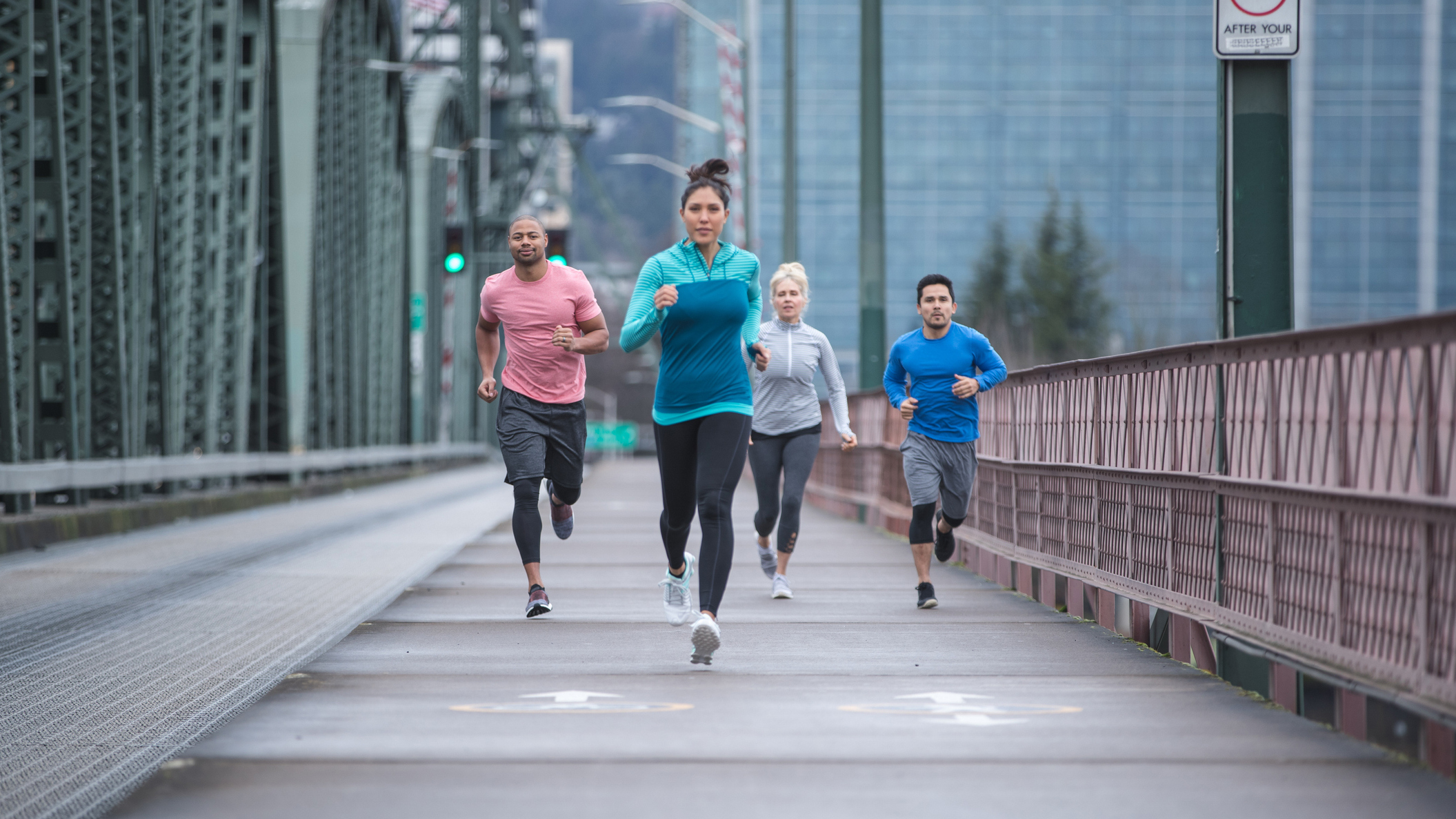A certified coach says this is the one thing that holds most runners back—and explains how to fix it
All you need is a few minutes a day to improve your trunk instability and build a stronger core

Set down those dumbbells. Step away from that abs wheel. Save the Bosu ball for later. And, instead, reach for your toothbrush and stand on one leg.
According to certified coach Jude Palmer, introducing instability to your day-to-day is one of the best ways to improve your running because it strengthens your trunk muscles.
“One thing I always ask people is, ‘Can you brush your teeth on one leg?’ Can they do that morning and night?” the founder of Run Surrey Hills tells Fit&Well. “If you can’t, don’t get excited about going to the gym. You need to be at home standing on one leg more.”
Unstable moves, like standing on one leg, force the core to work harder, leading to more stable trunk muscles, which are crucial for efficient movement, balance and injury prevention.
“Anything on one leg is really good,” says Palmer, “because when we run we’re never running on two legs.
“So can you do stuff on one foot? If you’re brilliant and really strong and can do deadlifts one-legged, that’s great. But the majority of people can’t, especially beginners.”
Fix your posture and trunk stability to run further and faster
Palmer goes on to explain that an inefficient posture due to poor trunk stability, tends to hold most runners back.
Start your week with achievable workout ideas, health tips and wellbeing advice in your inbox.
“I reckon 90% of running problems can be fixed by running upright,” she says. “Most people slouch or run really far forward or back. If you can be upright, your body is set up for success.”
Running with an upright posture, she explains, allows for a greater range of motion to bring your knees up with each stride. It allows for a cleaner follow-through and creates more space in your torso to breathe.
And it’s not just your running that will benefit from greater trunk stability. “A stronger core will mean you’ll have a greater ability to balance, to reach for things when you’re unstable, to pick things up off the floor.
“The World Health Organisation labels fall-related injuries as one of the biggest causes of premature death. Yet a lot of people, especially beginners, can't stand upright for long periods.
“They’re not strong enough. It’s a long-term game we’re playing, not just the running game.”
Palmer's three-step approach to improve trunk stability
Before you start working on your deadlifts or think about adding more crunches to the end of your workout, Palmer has some simple ideas you can try for strengthening your trunk muscles at home.
1. Take the balance test
The first thing Palmer gets new clients to do is balance on one leg.
“As a little intro, I’ll ask if you can bend to the left, can you bend to the right, can you get that five quid that’s on the floor,” says Palmer.
“If that's tricky, that’s what you need to work on before you get overexcited about doing a massive leg day at the gym."
2. Practice instability
Next up, Palmer gets her clients to introduce balance training into their daily routine.
“Can you stand on one leg when brushing your teeth? When waiting for your tea to brew? Can you reach for the teabags while off balance?
“It’s all about training instability. It gets you used to all the corrective, little movements that strengthen your legs and core.”
3. Keep it varied
To progress further, Palmer says you need variety. “If you do the same thing you'll get the same result,” she says.
“If you can do a two-minute plank, get someone to try to push you over while holding a plank. Go and do stuff that is unstable. Go do stuff on one leg. Go do stuff on uneven surfaces.”
Now, and only now, may you reach for the Bosu ball.

Sam Rider is an experienced freelance journalist, specialising in health, fitness and wellness. He is also a REPS level 3 qualified personal trainer.
